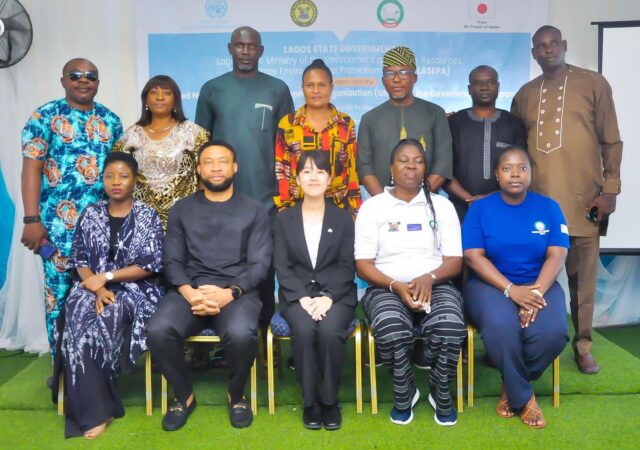- Experts from around the world share strategies for roadmap on decarbonization
In the lead up to the Clean Energy Ministerial and Mission Innovation’s Global Clean Energy Action Forum in Pittsburgh, dozens of international, national and regional experts in clean energy, green building and sustainable development today are convening at the daylong workshop, “Clean Energy, Climate and the Built Environment: Ensuring a Healthy, Just and Sustainable Future for All.”
This pre-conference, interactive event is hosted by Green Building Alliance (GBA), Covestro THINC30, Phipps Conservatory and Botanical Gardens, United Nations Economic Commission for Europe, United Nations Environment Programme and the Global Alliance for Buildings and Construction, and is being held at one of the greenest buildings in the world – Phipps.
At the workshop, these and other well-respected thought leaders are sharing their expertise and ideas on decarbonizing all aspects of the built environment, which includes homes and workplaces, roads, bridges, tunnels and the vehicles that drive on them, and the water and electricity systems that deliver essential services.
Post-workshop, these solutions and strategies will be crystalized into a roadmap with recommendations for transitioning the built environment to clean energy – in Pittsburgh, across the country and around the world.
In a series of five sessions, the experts are examining the decarbonization of buildings, both existing and new construction, electrical grids, and manufacturing processes and supply chains using Circular Economy principles. In addition, clean energy, economic development and the need for a just transition that empowers and includes all people, as well as how built environment climate solutions can and are being financed are being explored.
Among the experts participating: Mark Radka, Chief of the Energy and Climate Branch, United Nations Environment Programme; Michal Drabik, Chief of Section, Economic Affairs, Sustainable Energy Division, United Nations Economic Commission for Europe (UNECE); Kevin Walker, CEO, Duquesne Light; Stefanie Held, Director, Sustainable Energy Fund, United Nations Development Programme; Chris Gearhart, Director, National Renewable Energy Laboratory Center for Integrated Mobility; Brandon Dennison, Founder, Coalfield Development; and Stacy Smedley, Executive Director, Building Transparency and Sustainability Director at Skanska.
“As the world seeks actionable solutions to rapidly address climate change, decarbonizing the built environment presents a tremendous opportunity for meaningful impact,” said Jenna Cramer, President and CEO, Green Building Alliance. “With buildings and construction responsible for almost 40% of global energy-related carbon emissions and 36% of our energy use, transitioning the built environment to clean energy is critical. However, the solutions that are deployed must also honor and uphold social justice principles, because making this change will also touch the lives of the people who live, learn, work in, and enjoy our physical spaces.”
“Industry plays a critical role in clean energy and climate solutions and Covestro, one of the world’s leading chemical and polymer companies, plays a unique role in the built environment,” said Rebecca Lucore, CSR and Sustainability, Covestro LLC. “Not only are our corporate complexes part of the built environment itself, but our products are used by many other built environment industries, including construction, automotive, furniture, electronics and energy. So, we have a two-fold opportunity — to innovate and implement climate neutral production and operational processes and practices internally at our sites and, for our customers, to produce a portfolio of high-performance, climate neutral products that help them achieve their own sustainability goals. Today, we’re working on both tracks.”
“The built environment impacts all aspects of quality of life for citizens around the world. By bringing together global experts to share solutions on this topic, we can continue momentum towards wide adoption of high-performance building standards that will provide people with healthy, affordable, and efficient homes and buildings while drastically reducing emissions and climate impacts,” said Charlotte Griffiths, Officer-in-Charge, Sustainable Energy Division of UNECE, which runs the High Performance Buildings initiative. “Buildings and the built environment remain highest priority for action by communities and by countries to deliver not only the Paris Agreement, but also the whole 2030 Agenda for Sustainable Development.”
“The growing energy use from inefficient buildings will impact us all, whether it be through delayed access to affordable energy services, poor air quality, or higher energy bills,” said Mark Radka, Chief of the Energy and Climate Branch, United Nations Environment Programme. “Although the buildings sector is responsible for nearly 40 percent of energy use, it has opportunities that are amongst the most cost-effective climate measures, and these need to be taken up at scale. The transformation needed to decarbonize the buildings sector requires much more cooperation and coordinated leadership within the building sector. We are committed to supporting this.”
“As the home of three of the greenest net-positive energy buildings in the world, Phipps is excited to provide a working example for attendees of CEM/MI of what good looks like. The built environment is a crucial arena for climate action, and we’re honored to join with our partners in showing that long-term, regenerative approaches can result in buildings that are healthy for people and the planet,” said Richard V. Piacentini, President and CEO, Phipps.








Your point of view caught my eye and was very interesting. Thanks. I have a question for you.
I don’t think the title of your article matches the content lol. Just kidding, mainly because I had some doubts after reading the article.